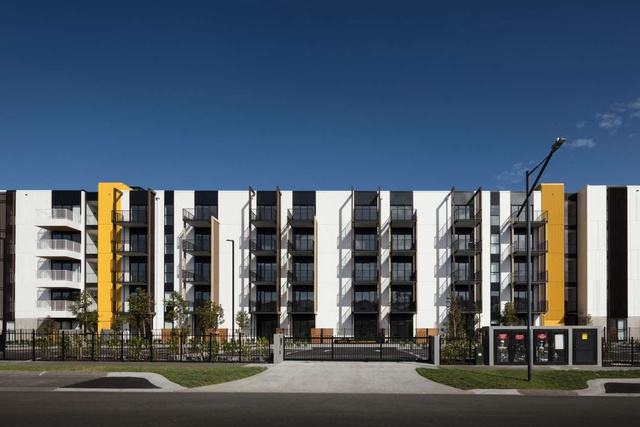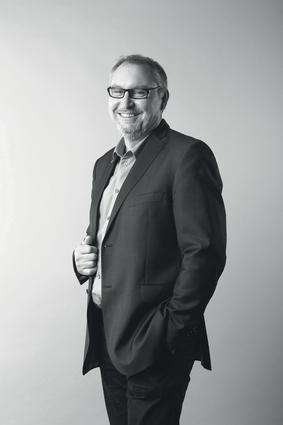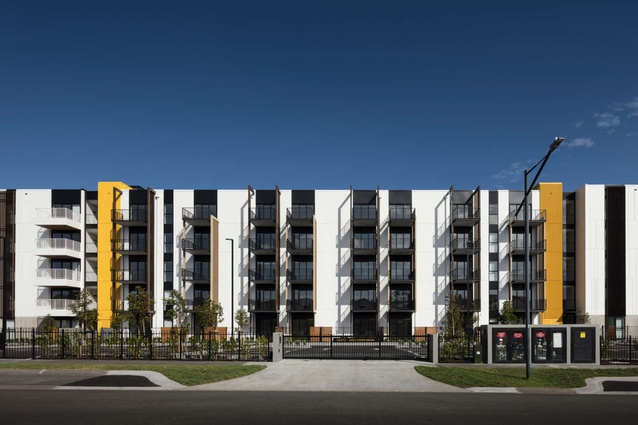Passion for the profession: Tim Melville
Recently appointed New Zealand Institute of Architects president, Tim Melville of Warren and Mahoney, speaks to Architecture New Zealand about some of the challenges that lie ahead during his two-year tenure.
Architecture New Zealand (ANZ): What are some of the important issues the industry is facing right now?
Tim Melville (TM): Capability, capacity, competence – nothing particularly new, I suppose, but thrown into relief by recent developments affecting the country’s biggest construction firm and the challenges presented by an ambitious programme like KiwiBuild. I think, as an industry, we continue to struggle with scale at a time when infrastructure projects are becoming increasingly complex.
Skills and training remain important issues, as do productivity, cost and performance of materials, and the difficult task of shifting the construction industry towards adopting more innovative ways of doing things. Procurement processes, especially those implemented by the government, and risk allocation are also significant issues.
Then, there are even-bigger-picture issues with local implications: none bigger than climate change and the low-carbon economy. These bear directly on the subjects of the resilience and sustainability of buildings and infrastructure in the New Zealand context of seismic vulnerability and coastal settlement. On the people front, access to the construction industry and career advancement are important issues. For one thing, barriers to female progress in the construction trades and professions need to be dismantled.
I don’t want to give the impression, though, that it’s all too daunting. On the plus side, there’s a widespread awareness of the industry’s challenges and a determination to respond to them. Also – and this is a good thing – New Zealanders’ expectations of their cities and their environment, generally, are rising and public pressure, and political responses to it, will drive the industry to improve its performance.
ANZ: What are your aims while heading the NZIA?
TM: I’ve been elected as president at a time when the Institute is in good heart. I served on the NZIA Council with Pip Cheshire and Christina van Bohemen during their terms as president, and they both did outstanding jobs in promoting the interests of architects – and architecture.
So, I have a good base for my time as president. I want to continue the focus on engagement, with the government, the wider industry and the public, and press ahead with recent NZIA initiatives – such as our kawenata or covenant with Māori designers, represented by Ngā Aho, and the Diversity Agenda – that promote a diverse and inclusive profession.
It’s also important that architects develop more collaborative relationships with engineers, quantity surveyors, project managers and builders so that we can collectively find solutions to the issues I’ve mentioned. For our part, it’s vitally important that architects are equipped to meet the challenges of the fast-changing world in which we operate. The Institute has a core responsibility to assist its members in the practice of their profession.
Above all, I want the Institute to be an effective advocate for and supporter of its members, and to be an organisation to which those members are proud to belong.

ANZ: A big issue for the profession is digital technology.
TM: It’s true that adapting to new iterations of digital technology is one of the challenges, or requirements, of contemporary architectural practice. Upskilling is an ongoing fact of professional life.
The real issue is how this new technology changes the way we work with our partners in the industry. Recently, I helped set up an NZIA Building Information Modelling [BIM] working group. The majority, probably, of our profession are not yet providing BIM services. We’re going to introduce BIM to our members, give them guidance and generate material so that they can gain a fundamental understanding of how they can use the technology.
ANZ: How do you think architects are viewed publicly?
TM: I think positively if rather vaguely. What we do might be a bit mysterious to the wider public, which is understandable. There’s an increasing public interest in architecture but there’s not a strong tradition here of public discussion of architecture, or informed coverage of it in the mainstream media.
It’s no use complaining about this – the onus is on the Institute and its membership to do something about it. We were probably quite introverted for much of our history but we’ve become more public-facing in the past few years. We’ve redeveloped our website to make it much more accessible. We’re establishing the annual Festival of Architecture as a nationwide event. Our Awards programme is not just about peer recognition, it also shows the public examples of good architecture.
We’ve partnered with several galleries around New Zealand to present our 2016 Venice Biennale exhibition. We’re active publishers of books about New Zealand architects and architecture, we’ve launched the Friends of Architecture programme and, four years ago, we started an architectural writing competition with The Warren Trust. One goal of the competition is to encourage secondary school students to write about architecture. We’d like younger New Zealanders to have an informed interest in architecture.
ANZ: How will the Diversity Agenda be carried out?
TM: We want a profession – and an industry – that reflects our society and is open to all groups within it, and gives all those who enter the profession opportunities to progress according to their talents and efforts. We’ve established the basis of a relationship with Ngā Aho, and we’ve launched the Diversity Agenda with Engineering New Zealand and ACENZ. The first goal of the Agenda is to have 20 per cent more women in architecture and engineering roles by 2021. More than 40 firms have already signed up. I should add that we may not have reached this point without committed advocacy from Architecture+Women NZ over a number of years.
ANZ: How do you hope to work on KiwiBuild?
TM: We’re taking every chance we can to convince the government that design – at the micro level of individual dwellings and the macro level of substantial residential developments – must be integral to KiwiBuild. We know the government, and particularly Phil Twyford as KiwiBuild minister, is under great pressure to put runs on the board. All sorts of people are bringing schemes to the minister. In this situation, the Institute has to be the advocate for design.
KiwiBuild is the biggest opportunity in 70 years to raise the standards of New Zealand housing design, production and performance significantly. At its scale, the programme is about establishing communities, not just building houses. It’s a huge investment in the quality of this country’s life and that investment must be maximised. This won’t happen unless design quality is included in the process of housing procurement.
I also see KiwiBuild as a further prompt to our members to develop their skills in multi-unit design. I realise this is a particularly hard-headed sector of the market but architects have to get in there and learn how to operate successfully within the parameters of the genre.
KiwiBuild will be a big challenge to the construction industry. There are plenty of lessons from the recent past about the price the country could pay if the industry, and the government, gets it wrong.

ANZ: Are there overseas models to follow?
TM: I’m sure there are aspects of mass housing programmes from around the world that have some relevance to KiwiBuild. But in terms of inspiration – as motivation, not necessarily as a model – perhaps we could look to our own history. When New Zealand was far poorer than it is now, it found a way to launch a public housing programme that transformed the lives of tens of thousands of its citizens.
ANZ: What is your background?
TM: I graduated from the University of Auckland and worked for a small practice in Auckland before going on my OE. In London, I worked for Orms, a firm that does a lot of commercial and institutional work. One of the projects I worked on was a building at Great Ormond Street Hospital – a very rewarding project. At Orms, I worked alongside Richard Naish and, when we returned to New Zealand, we both worked at Jasmax before we left to start RTA Studio in 1999.
We started with two of us but, over 12 years, we developed RTA into a practice of around 20 people. Building the practice was a steep learning curve for both of us, although it was also
a great education in the business of architecture. I’m very proud of what Rich and I achieved at RTA and, since I joined Warren and Mahoney in 2012 as a principal in the Auckland studio, I’ve had the opportunity to work on some exciting large-scale projects. My experience in a range of architecture practices – from very small to rather large – will, I hope, stand me in good stead over the next two years as NZIA President.













